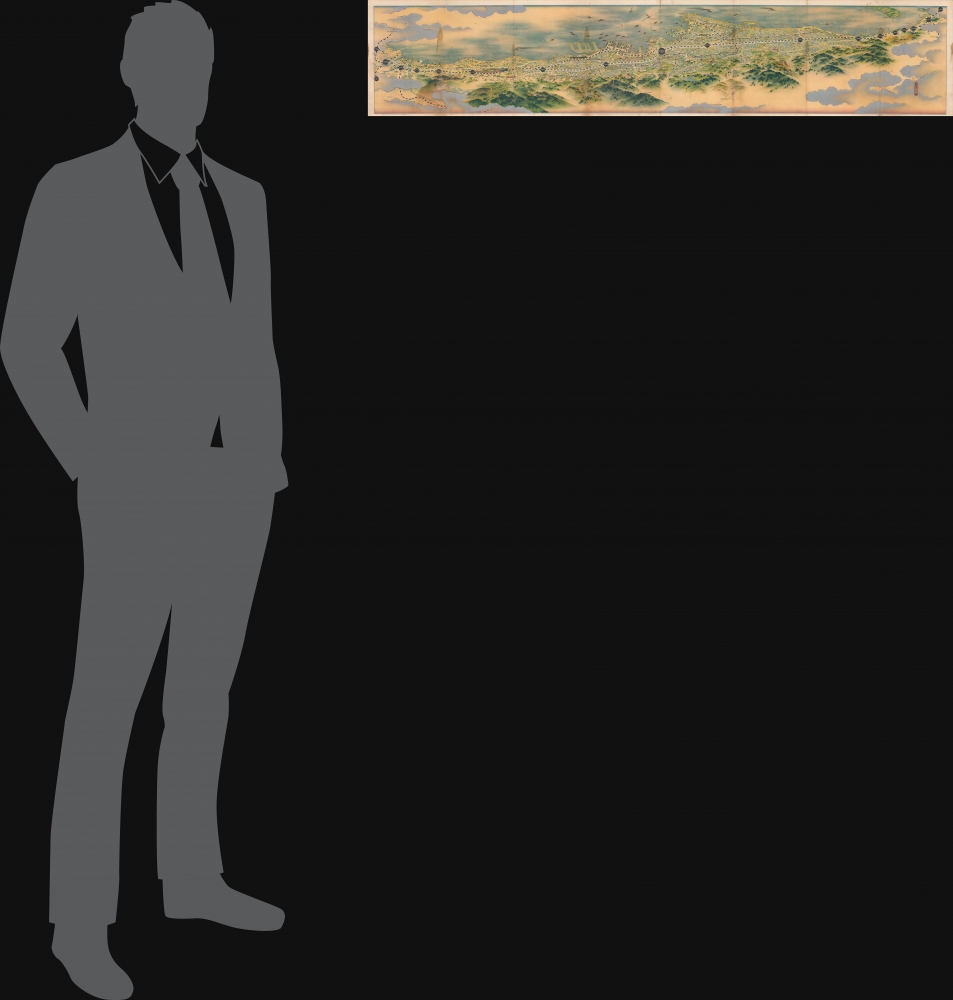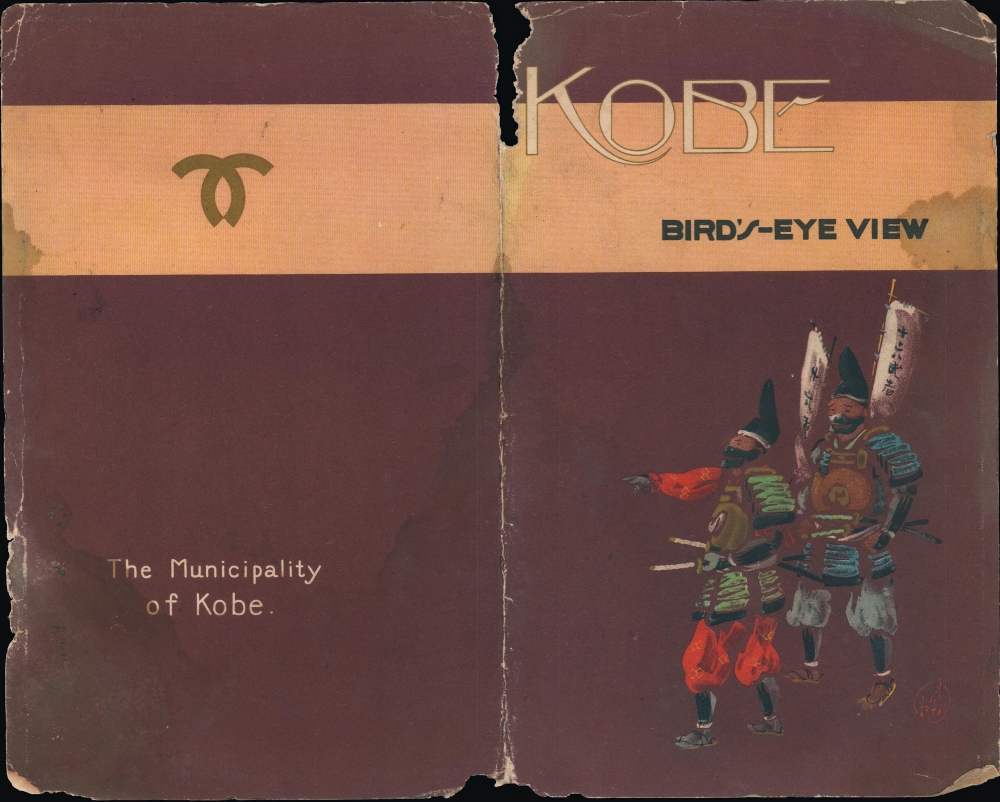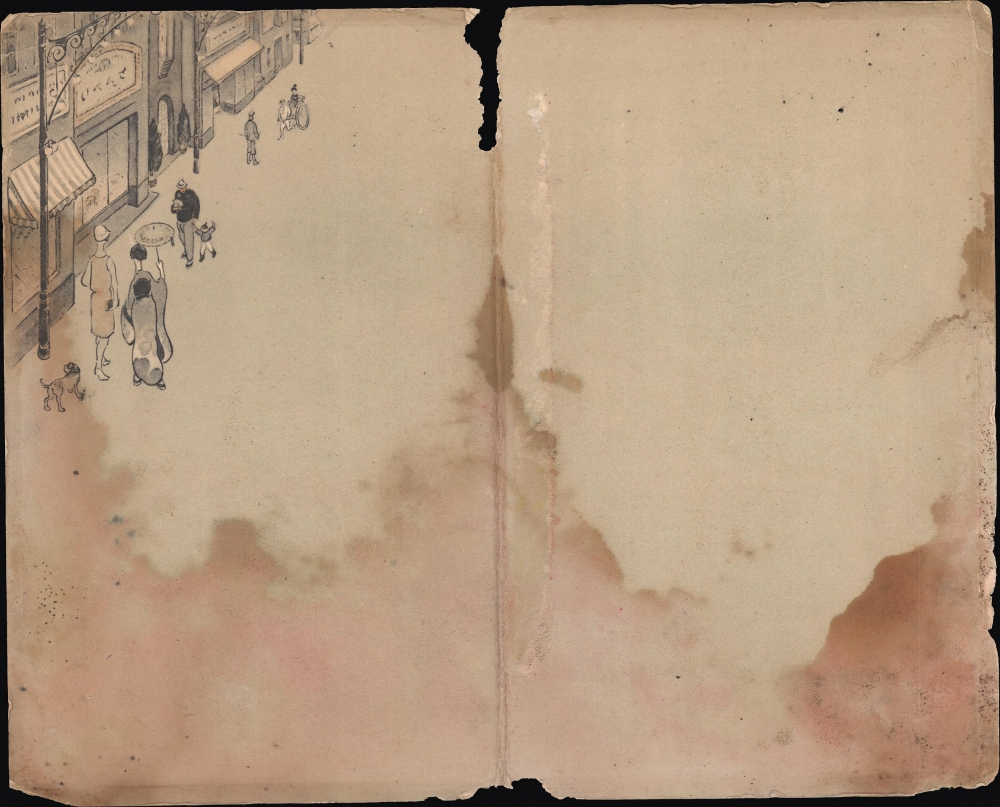1937 Toppan Printing Co. Bird's Eye View of Kobe, Japan and Environs
Kobe-toppan-1937
Title
1937 (undated) 8 x 41.25 in (20.32 x 104.775 cm)
Description
A Closer Look
Oriented towards the east, this view takes in Kobe and surrounding towns and cities, stretching from the Kansai region (Osaka and Kyoto) at left and Himeji and Okayama at right. Rail lines, including suburban electric railways, are highlighted, with cars illustrated shuttling back and forth along them. In the background, Kobe and Hyōgo Harbors are depicted, with a fleet of ships bustling around Osaka Bay.Points of interest, including temples, mountains, golf courses, parks, and sports stadiums are illustrated and labeled. The Koshien Grounds (Koshien Stadium) at left was the largest sports stadium in Asia when completed in 1924. Modeled after the Polo Grounds in New York City, Koshien has outlived its inspiration and continues to be used today as the home stadium of the (Osaka) Hanshin Tigers.
Stylistically, the view is reminiscent of bird's eye views that were highly popular in Japan at the time, such as those by Yoshida Hatsusaburō. The clouds surrounding the view also give it an ethereal feel reminiscent of traditional Japanese landscape paintings. The view is significant for being published in English, and was presumably intended for foreign visitors to Kobe.
Publication History and Census
This view was published by the Toppan Printing Company (凸版印刷株式會社), perhaps at the behest of the Kobe Municipal Government, which is named on the cover. An artist's signature appears at right but looks to be an unidentifiable pen name. It is undated, but a brief description of the map on a website of the Kobe Municipal Government dates it to 1937 (Showa 12). Curiously, it does not appear in the catalog of the Kobe Chuo Municipal Library, nor Kobe University's, nor in any other institutional collections.Cartographer
Toppan Printing Company (凸版印刷株式會社, 1900 - present) was a printer and lithographic press founded in Meiji Japan in 1900 as Toppan Printing Limited Partnership. The founding of Toppen closely correlates to Meiji efforts to modernize Japan in the late 19th and early 20th centuries. The firm was formally reorganized with an influx of new investment in 1908, taking the name Toppan Printing Co., LTD (凸版印刷株式會社), which literally translates as 'Letterpress Printing Company,' reflecting the company's embrace of the then cutting edge Erhört letterpress method. By 1910, Japan had modernized to such an extent there was a growing need for brightly colored advertising, propaganda, touristic, and commercial printing. Toppen employee Gennojo Inoue split off from the firm to import color offset printing technologies from the United States and Europe, founding the Offset Printing Company in 1913. After four years of successful operation and growing market share, Toppen acquired the technologically superior company and reabsorbed Gennojo Inoue as an executive. Despite the Great Kanto Earthquake of 1923, Japanese efforts at modernization advanced rapidly. Between 1920 and 1929 the company's production and revenue grew dramatically. In 1920 or 1920 photomechanical printing was introduced to Japan, again by the efforts of visionary company president Gennojo Inoue. From the 1930s on, Toppen under Gennojo Inoue's guidance continued to grow, becoming one of the largest printing concerns in Japan. They established offices in other cities, including Osaka. In 1938, they built a large press factory, the Itabashi Plant, in Tokyo. During World War II the Toppen firm was utilized for the war effort, producing new currencies, bonds, government securities, and propaganda material. Following the war, Toppan was reorganized and continued to grow. It is today a major Japanese firm, diversified in multiple industries and traded on the Tokyo Stock Exchange. More by this mapmaker...










